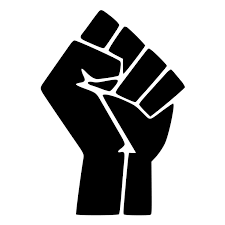What more can we achieve? A Critical Review of ‘Silenced: The Hidden Story of Disabled Britain’
‘Silenced: The Hidden Story of Disabled Britain’ is a recent BBC documentary which captures the challenges and the emergence of disability rights in modern Britain. The programme draws on how Disabled people were shut out of society, how they were treated with fear and prejudice, and the fight for basic human rights. ALLFIE’s Disabled Black Lives Matter group opens the conversation on intersectional erasure, to encourage discussion which can inform teaching on tackling disablism, racism and interlocking oppression within the school curriculum.

The documentary is presented by Cerrie Burnell, a white Disabled presenter who continues to fight against disablism. Burnell personally experienced this discrimination, after being horribly abused as a CBeebies presenter because of her impairment. This sets the premise of the documentary, which delves into the history and development of the Disability Rights Movement in modern Britain. It addresses critical issues of eugenics and segregated institutions, pinpointing shifts in Britain’s attitudes towards Disabled people. The documentary notably brings to light the origins and history of segregation, shedding light on how our modern-day attitudes to Disabled people are influenced by the workhouses of Victorian Britain.
While ALLFIE welcomes greater media representation of Disabled people’s exclusion to raise awareness, we believe more current debate is needed on how segregated education reinforces the manifestation of exclusion, and how the dreadful consequences for Disabled people and society continue today. One of the greatest strengths of this documentary is that it provides a much-needed insight to the UK Disability Rights Movement.
It outlines some of the shocking ways Disabled people have been abused and oppressed whilst also addressing the ways in which Disabled people have fought for equality. It is a good attempt to change the narrative around the invaluable contributions made by Disabled people to create an inclusive society for all. The programme tried to give recognition to Disabled campaigners as leaders of social justice, determined to fight persistent outright disablism.
Additionally, the show features the significant campaigns led by prominent Disabled Women activists, such as Baroness Jane Campbell, Alia Hassan, and the founder of ALLFIE, Micheline Mason, televised alongside her daughter, Lucy Mason, helping to tackle disability discrimination with our society. However, one of the shortfalls of the documentary is that it looks at Disabled people as a homogenous group.
ALLFIE’s Disabled Black Lives Matter (DBLM) group noted that the programme was not representative of Black Disabled people activists, such as Millie Hill, Saâdia Neilson, Dr. Ossie Stuart, and Nasa Begum, who have made major contributions to our Disability Rights Movement. It was clear that there was no room within the programme to give space to Black Disabled campaigners. The message for us and the future generation is its “ok” to do valuable work behind the scenes, but do not expect to get recognition.
Black Disabled people must deal with multiple barriers of disablism, racism, and the resulting intersectional and interlocking oppression in our everyday lives. We know the intersect of disablism, racism, sexism and other intersectional oppressions in schools continues to be a prominent issue that negatively impacts on our Disabled children’s performance, causing increased risk of exclusion from school and other areas of life.
The programme also under-represented many other groups the Disabled people’s movement is made up of. For example the experiences of Young people, or those with learning difficulties, were minimised. The focus remained predominantly on interviewees with physical impairments.
There remains an underlying assumption that the issue of segregated institutions is no longer a problem in today’s society. In fact, there exist current examples of institutionalisation and scandals (see Dame Christine Lenehan report and the Timpson Review).
In conclusion, we felt that the documentary was a good introduction to the Disability Rights Movement, but it touched on the various topics too briefly. Perhaps detailing the documentary in 3 or 4 episodes would have been more informative. We would have liked to see more explanation on the medical model and the social model, and how language around disability has evolved.
In depth discussion of topics such as racism and intersectionality of Disabled people’s identities, and experiences of people with various impairments, would no doubt have enriched the programme. It also missed a great opportunity to show the current barriers that Disabled people face today. For example, many Disabled people are still living in institutions today, and are still being segregated in schools and colleges.
From our point of view, the programme made it seem like the struggle of disability rights is now over, and Disabled people now have equality. We understand that major progress has been made, but we know from our work, that equality is still far from being achieved, and the battle still needs to be won. We still have a long way to go for the inclusion of Black Disabled people and people of colour within our movement.
In solidarity.
![Allfie [logo]](https://www.allfie.org.uk/wp-content/themes/allfie-base-theme/assets/img/allfie-logo-original.svg)



